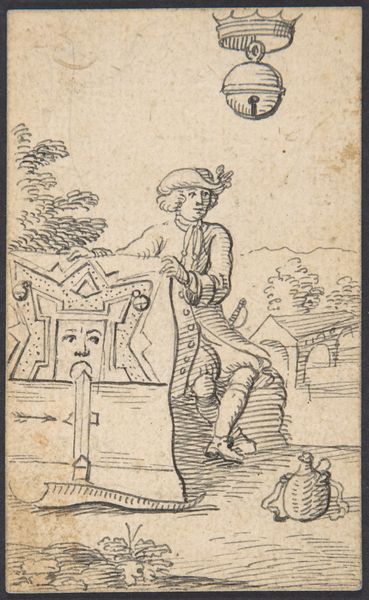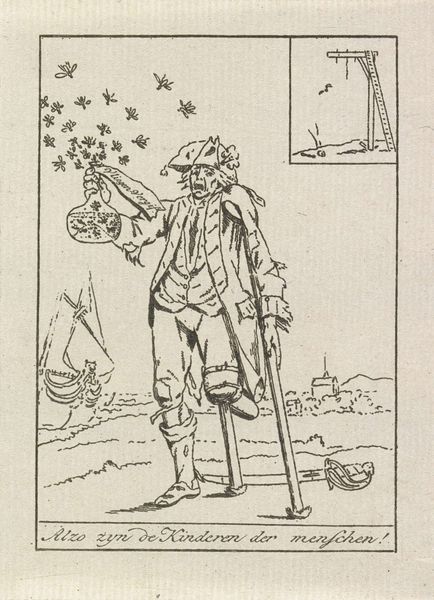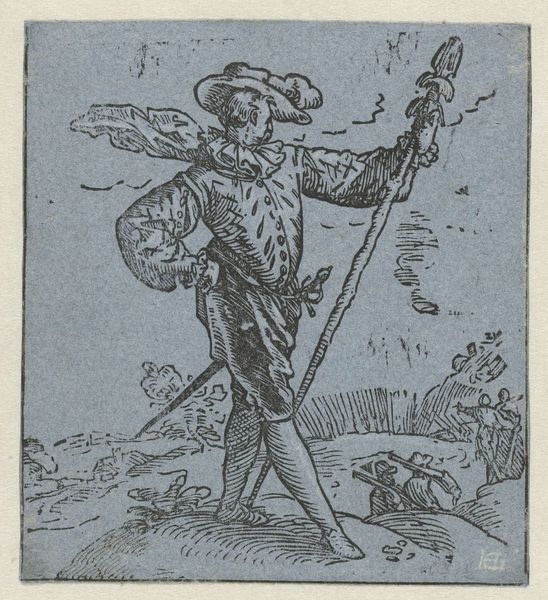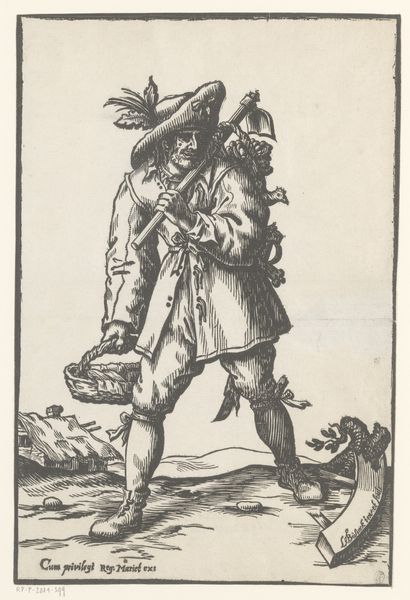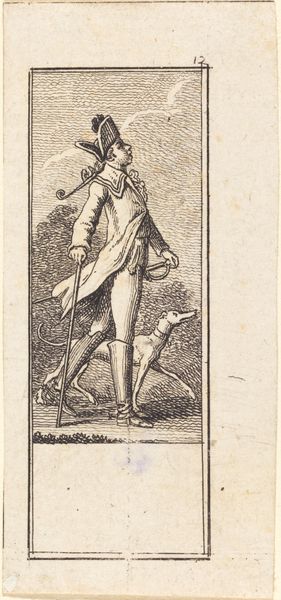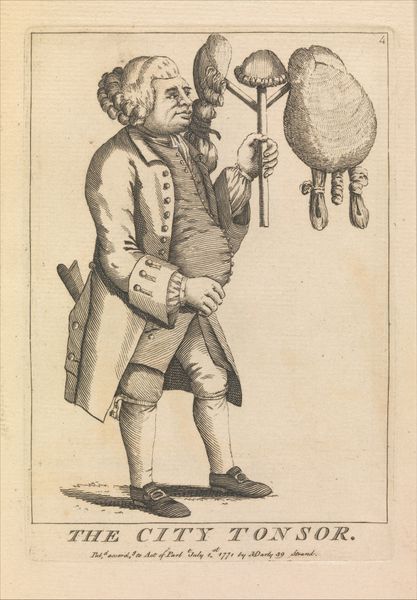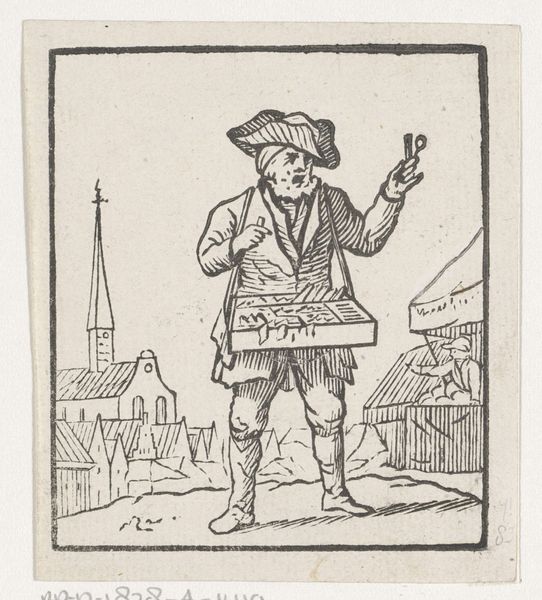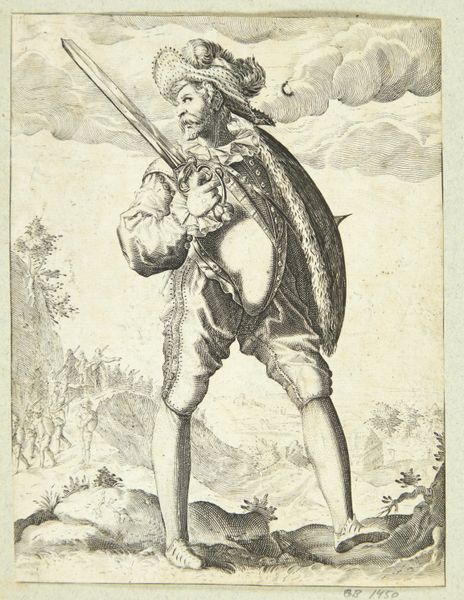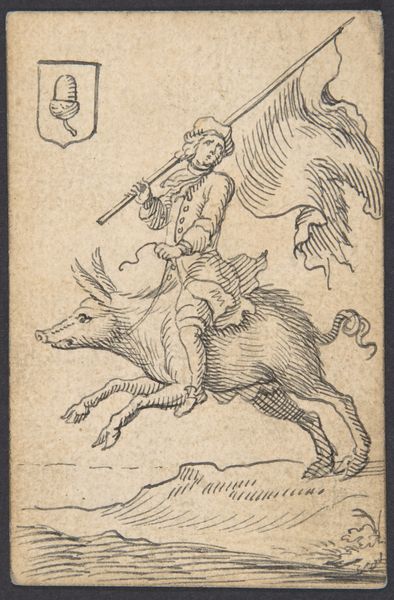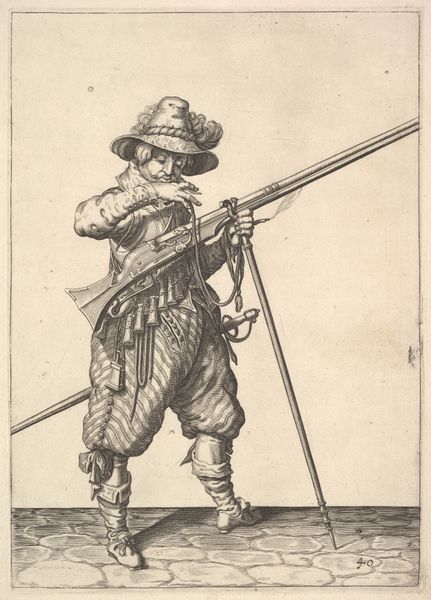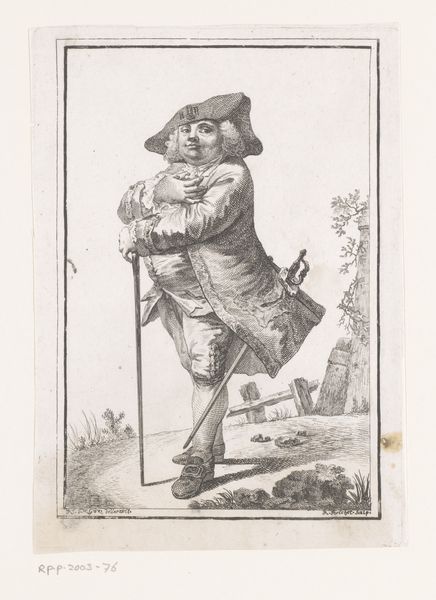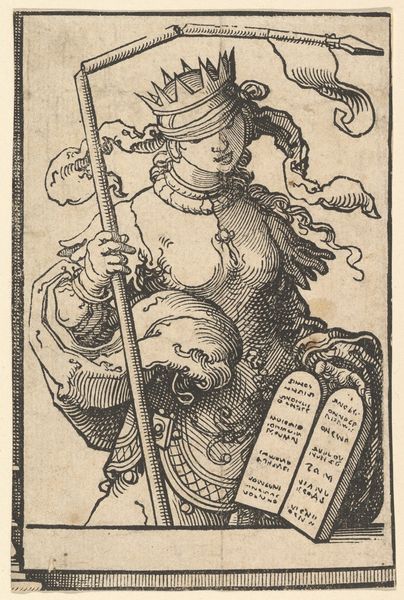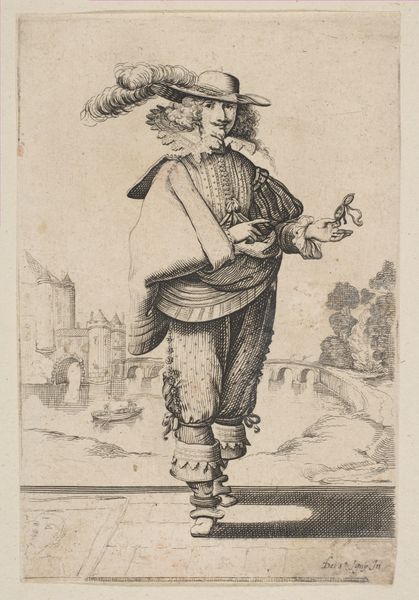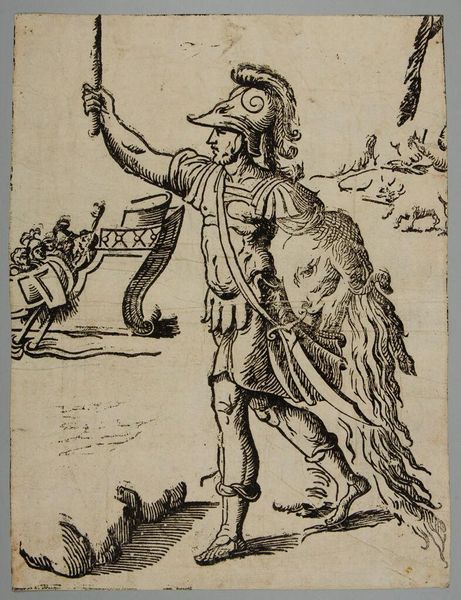
drawing, print, ink, pen
#
drawing
#
baroque
# print
#
caricature
#
figuration
#
ink
#
pen
#
genre-painting
Dimensions: sheet: 3 9/16 x 2 5/16 in. (9 x 5.9 cm)
Copyright: Public Domain
Editor: Here we have Johannes Brandenberg's "Shield King: A Man Astride a Snail," likely made between 1712 and 1730. It's an ink and pen drawing. What immediately strikes me is the odd juxtaposition of the regal figure and the snail - there's definitely some irony at play here. What do you see in this piece? Curator: For me, this print speaks volumes about the materials and production methods of its time. Ink, pen, and printmaking - relatively accessible, and thus capable of wide distribution. Notice the detail despite the scale: a commentary on power through readily available means? Editor: That’s interesting. So you think the materials themselves contribute to the overall meaning, not just the image? Curator: Absolutely. Think about the social context: who could afford large-scale paintings versus who could access printed images like this? This allows Brandenberg to participate and comment on power relations with the readily available, less-costly, printing and drawing making this artwork more accessible to a larger demographic. This democratisation allows a greater access point and wider commentary from an audience that otherwise might not have the avenue for engaging critically. Editor: So the cheap materials and printmaking opened this up as potential social critique, instead of merely an absurd image? Curator: Precisely. We could consider the labour involved too. Printmaking allows for replication and broad dissemination. How does this affect the artist's labour, compared to creating unique paintings for the elite? Are they participating in a capitalist cycle of production? It really challenges conventional notions of what "high art" constitutes when you look at process, labour and material. Editor: That’s a perspective I hadn’t considered before! Thanks, this has really expanded my understanding. Curator: It highlights how the materiality and means of production are crucial components in interpreting its cultural significance, a lot more that just a simple glance!
Comments
No comments
Be the first to comment and join the conversation on the ultimate creative platform.
